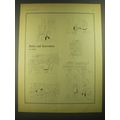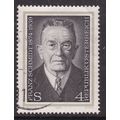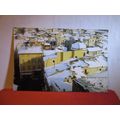Pontrieux, France - Le Viaduc / Viaduct, train - postcard c.1960s
- Condition : Used
- Dispatch : 2 Days
- Brand : None
- ID# : 181880745
- Quantity : 1 item
- Views : 180
- Location : United Kingdom

- Seller : justthebook (+1703)
- Barcode : None
- Start : Sun 02 Jun 2019 08:23:25 (EDT)
- Close : Run Until Sold
- Remain : Run Until Sold
Checks/Cheques
 for 1 item(s) edit
for 1 item(s) edit
Shipping Calculator
More Listings from This Seller view all
Seller's Description
- Postcard
- Picture / Image: Cairo - The Mosue El Mouayad [interior]
- Publisher: Lehnert and Landrock Succ
- Postally used: no
- Stamp: n/a
- Postmark(s): n/a
- Sent to: n/a
- Notes / condition:
Please ask if you need any other information and I will do the best I can to answer.
Image may be low res for illustrative purposes - if you need a higher definition image then please contact me and I may be able to send one. No cards have been trimmed (unless stated).
------------------------------------------------
Postage & Packing:
Postage and packing charge should be showing for your location (contact if not sure).
No additional charges for more than one postcard. You can buy as many postcards from me as you like and you will just pay the fee above once. Please wait for combined invoice. (If buying postcards with other things such as books, please contact or wait for invoice before paying).
Payment Methods:
UK - PayPal, Cheque (from UK bank) or postal order
Outside UK: PayPal ONLY (unless otherwise stated) please. NO non-UK currency checks or money orders (sorry).
NOTE: All postcards are sent in brand new stiffened envelopes which I have bought for the task. These are specially made to protect postcards and you may be able to re-use them. In addition there are other costs to sending so the above charge is not just for the stamp!
I will give a full refund if you are not fully satisfied with the postcard.
----------------------------------------------
Text from the free encyclopedia WIKIPEDIA may appear below to give a little background information (internal links may not work) :
*************
The Mosque of Sultan al-Mu'ayyad is a Mosque in Cairo, Egypt next to Bab Zuwayla built by the Mamluk sultan Al-Mu'ayyad Sayf ad-Din Shaykh from whom it takes its name. Construction began in 1415 and the mosque was completed in 1421. The complex included a Friday mosque and a madrasa for four madhhabs.[1] It replaced a prison which originally stood next to Bab Zuwayla.
In keeping with Mamluk custom, al-Mu’ayyad Shaykh was purchased by Sultan Al-Malik Az-Zahir Sayf ad-Din Barquq when he was ten or twelve years old. As an adult, he served for ten years as the governor of Tripoli under an appointment by Sultan An-Nasir Naseer ad-Din Faraj.[1]
The historian Al-Maqrizi relates the future Sultan al-Mu'ayyad was imprisoned in the same prison which the mosque replaced as while an emir under Sultan Faraj. Shaykh suffered so terribly from fleas and lice during his imprisonment, he vowed that he would transform the prison into "a saintly place for the education of scholars" if he ever came to power.[2] True to his word, when he became Sultan he commissioned the mosque.
In 1412, Shaykh assisted in overthrowing Sultan Faraj, and within six months, he seized power and became the new Sultan. He took the title al-Mu'ayyad and began to expand his empire through battles against neighboring territories. As sultan, al-Mu'ayyad led a number of successful campaigns to northern Syria, as well as fighting Turkomanneighbors in Anatolia. He advanced as far as Konya before having to return to Cairo. Sultan al-Mu'ayyad's reign was plagued by troubles: the Bubonic plague, currency devaluation, and rebellious bedouins all disturbed his reign.[1] Despite this, the Sultan still managed to oversee the building of the mosque, which is recognized today as one of Cairo's signature landmarks.
Under the sultan's sponsorship, the madrasa within the mosque became one of the most prominent academic institutions Cairo in the fifteenth century. The lavish endowment left by the sultan upon his death allowed the madrasa to hire the most eminent scholars of the day as professors. The most famous Quranic specialist in Egypt, Ibn Hajar al-'Asqalani, lectured in Shafi'i jurisprudence at the madrasa.[2]
Sultan al-Mu'ayyad Shaykh died in 1421, eleven years after he took power. Throughout his reign, he gained a reputation as a humble man and as one of the great patrons of architecture in Cairo. On his death, the sultan left behind several religious and secular monuments, including a khanqah in Giza, palaces along the Khalij el-Arab and the Nile, and the Mosque of Sultan al-Mu'ayyad.[1]
Construction of the mosque began in May 1415. The project was an ambitious one, costing the sultan 40,000 dinars between commencement and completion.[2] According to al-Maqrizi, thirty builders and one hundred workers labored on the structure over seven years.[3] The mosque required such a large quantity of marble that some of it was harvested from pre-existing structures. Besides marble, many other parts of the mosque were cannibalized from other buildings, including the mosque's columns and a beautiful bronze door and chandelier. The door and chandelier are particularly famous instances of this; both are said to have come from the Mosque-Madrassa of Sultan Hassan. Removing parts of current mosques was illegal while the Mosque of Sultan al-Mu'ayyad was being built, so taking the door and chandelier were tanamount to stealing, despite donations the Sultan made to the old mosque. Although the new mosque was not officially completed until 1422, an inaugural celebration was held in November 1419 to celebrate the new building.[3]
Even after the official conclusion of the mosque's construction, a number of structures in the original plans were never built. The dome of the second mausoleum attached to the mosque was never completed. A separate building for use as dormitories by Sufi students who studied at the madrasa were not immediately erected, despite an allocation of 20,000 dinars toward them. Later mosque records are unclear as to whether the Sufi dormitories were later completed as plans, though the students definitely were given space in which to live.[3]
Listing Information
| Listing Type | Gallery Listing |
| Listing ID# | 181880745 |
| Start Time | Sun 02 Jun 2019 08:23:25 (EDT) |
| Close Time | Run Until Sold |
| Starting Bid | Fixed Price (no bidding) |
| Item Condition | Used |
| Bids | 0 |
| Views | 180 |
| Dispatch Time | 2 Days |
| Quantity | 1 |
| Location | United Kingdom |
| Auto Extend | No |












